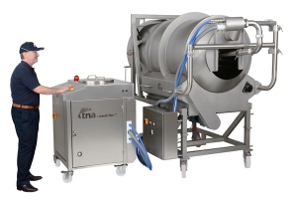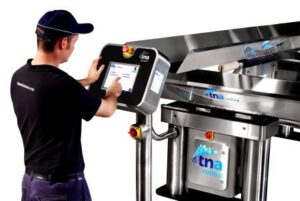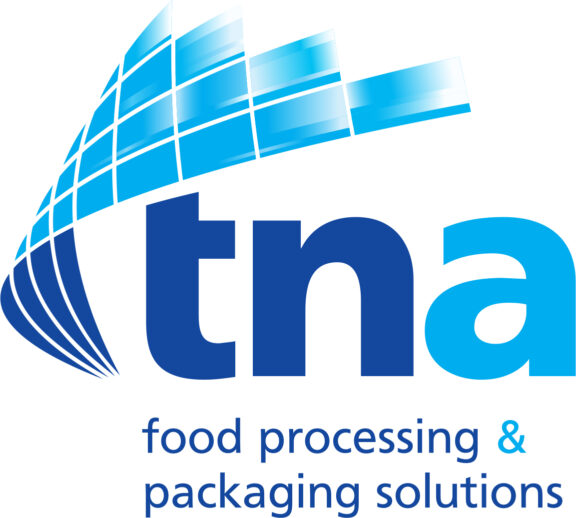Unpacking the new year: Exploring the food manufacturing trends set to dominate in 2022
food manufacturing | 5 mins read
December 8, 2021
The global food market ends 2021 at the record high value of US $8,945,354m, with forecasts pointing to a healthy 4.50% CAGR over the coming five years.1 Looking a little closer at this booming sector, confectionery and snacks is the segment leading the pack, with a market volume of US $1,592,401m this year alone.

With the future looking bright for the food market, we’ve put together our list of the top manufacturing trends that can help producers truly thrive in 2022.2
Enabling healthy experimentation
With consumers rejecting ‘fad foods’ in favour of a more mindful approach to their eating habits, snack manufacturers should look to offer indulgent treats in smaller pack sizes.3 These bite-sized pick-me-ups give shoppers the mood-boosting moment they need, without compromising their long-term health goals. Adaptable, high-performance processing and packaging solutions will be crucial for allowing food manufacturers to cater to consumers’ shifting priorities. Equipment that can be quickly optimised to process, weigh and pack a wide variety of products with minimal changeover times offers brands the opportunity for greater NPD experimentation, without impacting the production of its tried-and-true favourites.
Personal, premium and high volume?
Personalisation has always been a powerful tool for boosting shoppers’ engagement and commanding a higher price-point.4 The advent of more intimate digitally-enabled buying experiences, coupled with increased economic uncertainty, has sharpened consumers’ focus on how a product serves their specific needs now more than ever before.5
Personalised or limited edition ‘premium’ product varieties inevitably create additional processing and packaging complexity, impacting line throughput and yield. The latest equipment operating systems are helping manufacturers overcome these traditional barriers. By enabling more product types to be produced quickly without compromising on quality, meeting consumers’ high expectations for premium products has never been easier, or more profitable.
Mindful Convenience
As the world returns to more typical patterns of work and play, time will again become consumers’ most precious resource.6 Products that offer ease and value will therefore become more important – but shoppers are not looking for convenience at any cost. With awareness of the impact single-use plastics have on the planet growing, consumers are searching for quick fix snacks that don’t cost the earth – literally.
Brands can make their production lines more efficient, traceable and sustainable by harnessing the power of smart processing and packaging technology. This will help them reassure shoppers that their offering is both good for them and for the planet.
Embracing the digital revolution
2022 will be the year where the promise of augmented and virtual reality (AR and VR) realises its true potential. Food manufacturers are already adopting such technologies to optimise safety and efficiency by creating virtual representations of their production lines. These ‘digital twins’ allow producers to simulate the impact of a new setting or even piece of equipment before making concrete changes.
Industry commentators are now also hailing the rise of ‘the metaverse’ – fully-fledged, permanent digital spaces that can optimise food processing and packaging in the real world. With these advancements, plant operators may be able to operate lines from anywhere in the world, finally allowing for the adoption of hybrid, ‘work-from-home’ shift patterns.
Sustainable success
Lessening the impact products have on the planet will help food producers convince increasingly environmentally-conscious consumers to support their brands in the 12 months to come. But the benefits don’t stop there… Research suggests that shoppers are more likely to trust products that are ethically-sourced.7 This is because the company can typically provide concrete information about ingredients, processing methods and food security measures. By focusing on sustainability and traceability along the production line, manufacturers can address consumer demand for both improved safety and sustainability.
Local heroes
Local shopping skyrocketed in popularity during the pandemic out of necessity, as travel restrictions limited consumer movement and access to imported goods. This ‘close to home’ mentality has persisted, with 55% of consumers across 11 countries stating it is still important for brands to demonstrate their support for local businesses.8 Manufacturers should consider re-thinking their CSR activities to focus on how their operations can benefit the local community, as well as international consumers. Charity drives, work experience placements or educational site visits – anything that helps brands become better integrated with the community will help show a more human side to food production.
New year, new opportunities
There you have it – our predictions for what 2022 has in store for food manufacturers.
Ready to discover how our high-performance food processing and packaging solutions can help your production lines reach their full potential this year? Explore our food processing and packaging applications here: https://tnacomdev.wpenginepowered.com/applications/
1 Statista, Consumer Markets, Worldwide, Food 2021, https://www.statista.com/outlook/cmo/food/worldwide
2 Ibid, Statista
3 Food Navigator USA, Diet is no longer about preparing for swimsuit season, it is a tool for well-being to achieve broader goals of feeling healthy and high functioning. May 2021, https://www.foodnavigator-usa.com/Article/2021/05/27/Diet-is-no-longer-about-preparing-for-swimsuit-season-it-is-a-tool-for-well-being-to-achieve-broader-goals-of-feeling-healthy-and-high-functioning
4 GlobalData, TrendSights Analysis 2021: Individualism & Expression, March 2021, p.11
5 Ibid, Individualism & Expression, p.8
6 GlobalData, TrendSights Analysis 2021: Easy & Affordable, June 2021, p.9
7 Ibid, p.9
8 GlobalData,TrendSights Analysis 2020: Localism, October 2020, p.3


























